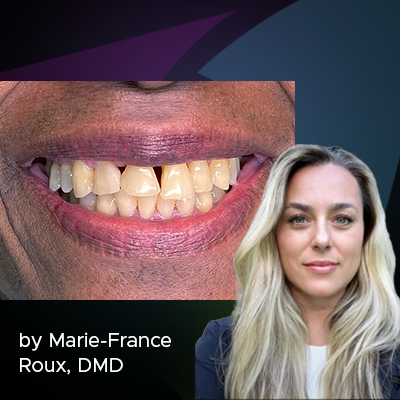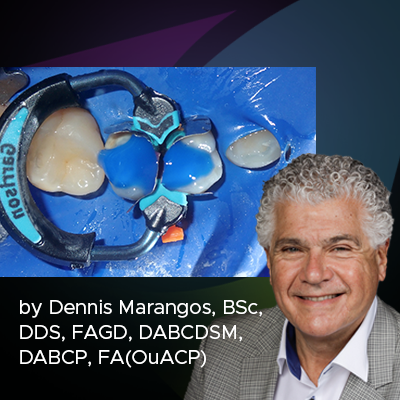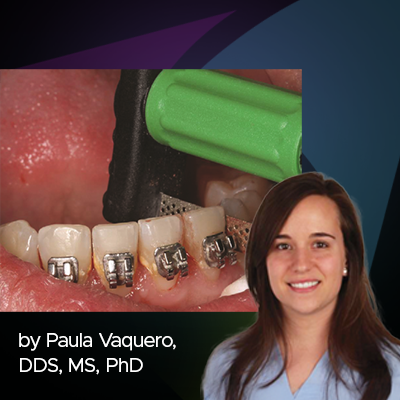
Creating the Ideal Class II Resin Restoration
Few clinicians of my vintage (Class of 1986 UW School of Dentistry) would have ever believed that composite could rival the form, function, and longevity of a cast gold restoration. Today with updated preparations, injection molding of a quality heated bulk composite (Filtek One Bulkfill, 3M), and the new Evolve Bioclear posterior matrix, it is time to begin to believe.
In this case the patient had moderate, cavitated caries on
the mesial of the 47. (FIG. 1) The patient was given local
anesthetic, then a rubber dam was placed, Bioclear Disclosing Solution was applied to the entire tooth, and then a large Diamond Wedge was placed as a pre-wedge. Pre-wedging is mission-critical for both a snug contact, and for the new objective mentioned in Figure 1, for the matrix to seat deeper in the era of injection molded, infinity-edge margins.
The new name of the game: Seat the Bioclear Matrix within 1-2 mm of the bone
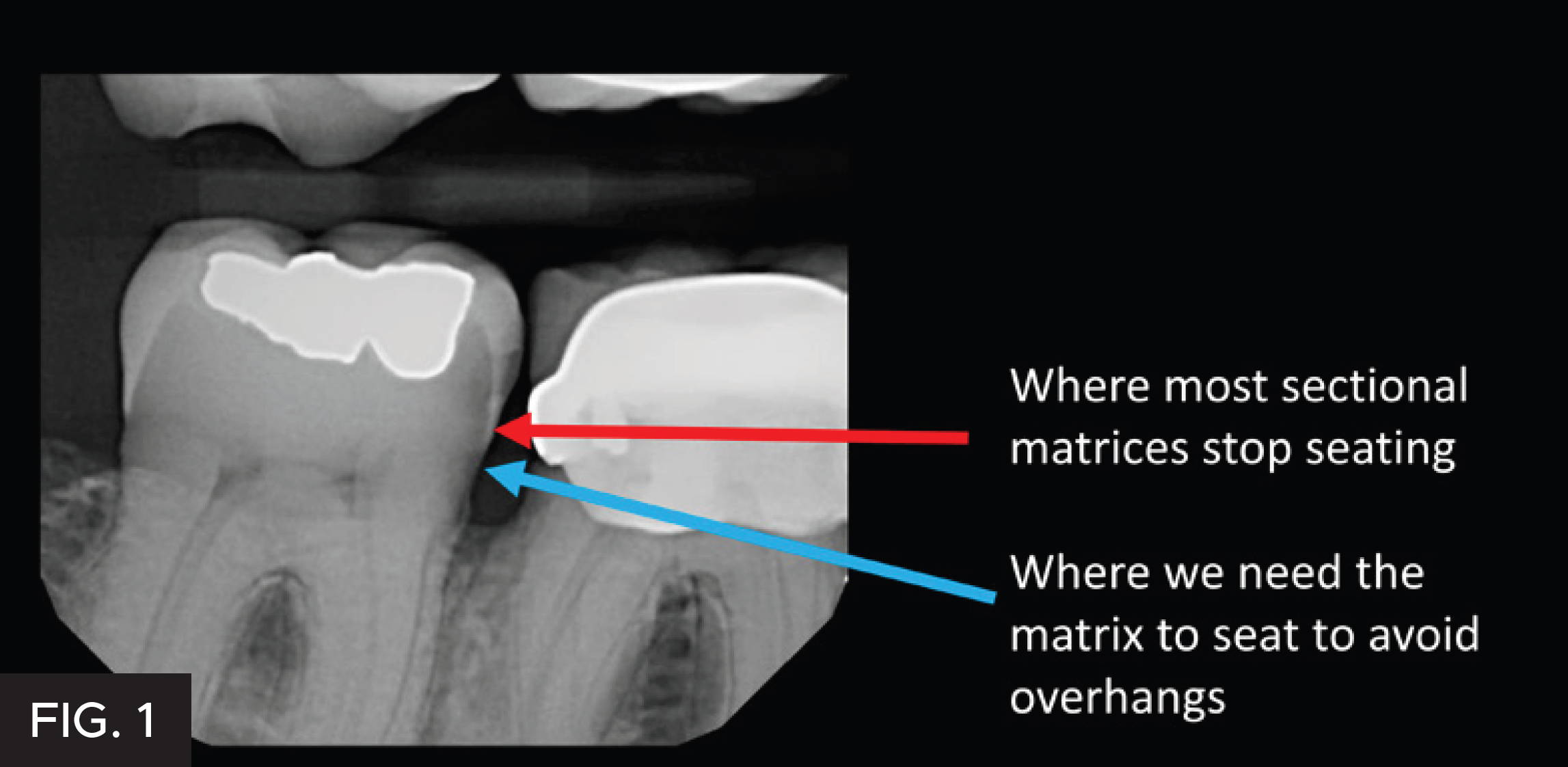
The Evolve matrix that has a definitive tooth-shaped form
rather than acting as a simple sectional matrix. Therefore,
choosing the right matrix height is key. The new Matrix
Height Indicator probe is inserted into the cavity prep,
(FIG. 2 example) then compared to visual landmarks such as the neighboring marginal ridge. For adults with some bone loss and/or when the tooth to be restored has a rubber dam clamp, 2 mm are added. In this case the cavity prep measured 6 mm deep (not shown), therefore an 8 mm blue Evolve matrix was chosen. (FIGS. 3, 4). A Twin Ring separator was placed (FIG. 5) and then a two-step injection molding was performed.
A 2-step placement was required because the cavity was deeper then 5 mm, which is the maximum depth allowed for most bulk fills. 3-point curing is also required for a full 5 mm depth of cure in the interproximal which is aided greatly by a clear matrix.
Figure 6 embodies the “gold-like” marginal integrity and
broad contact. Figure 7 radiographically demonstrates what an aggressive emergence profile, additive dentistry, and monolithic injection molded composite dentistry can achieve.
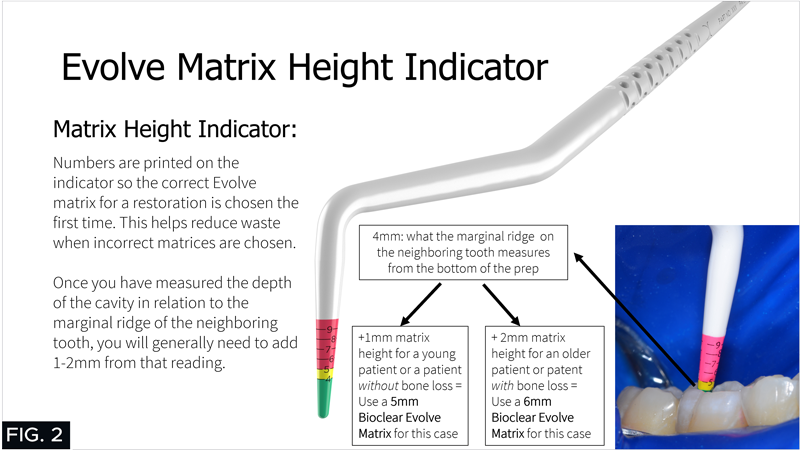
Clinical Case
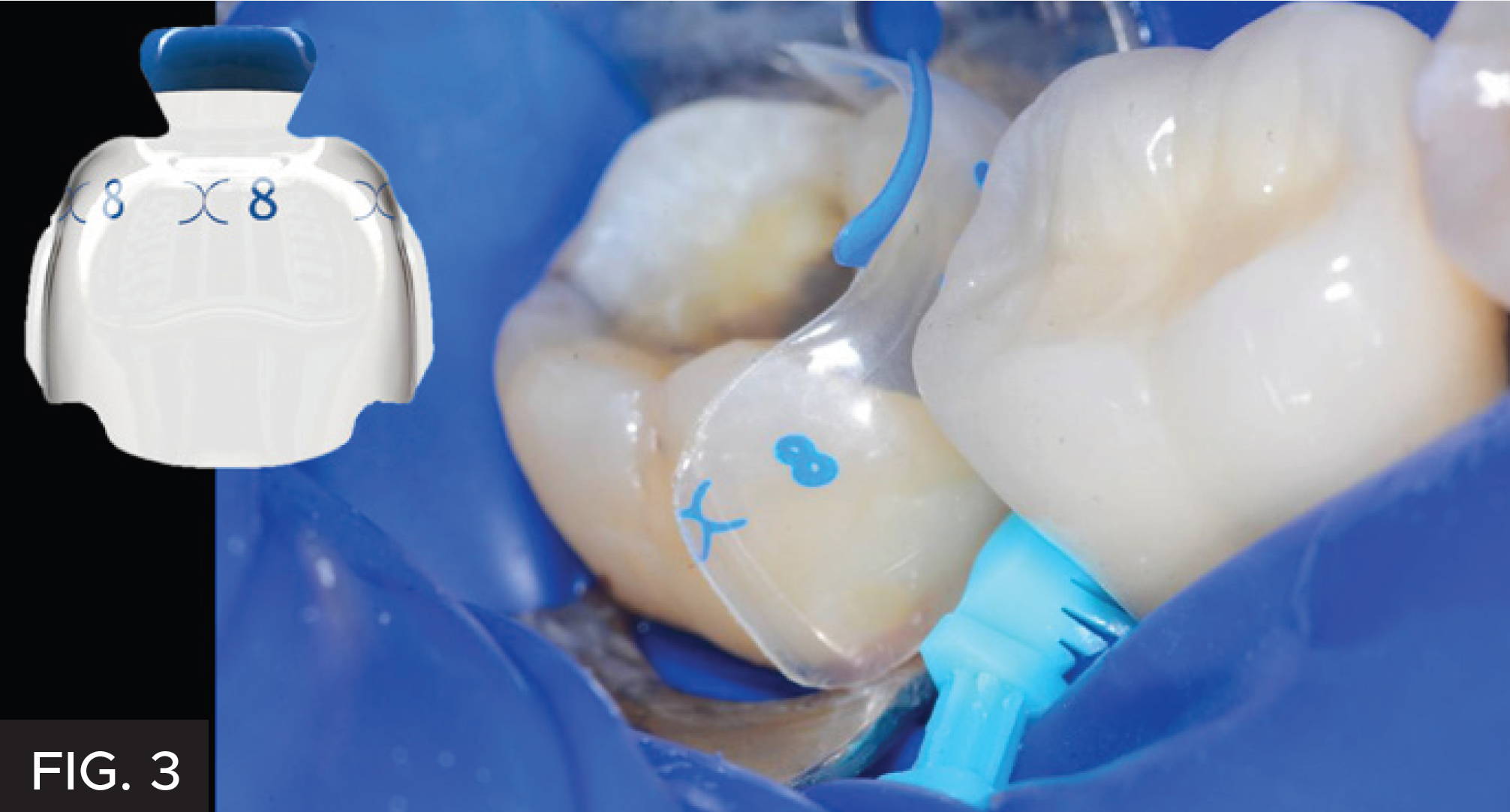
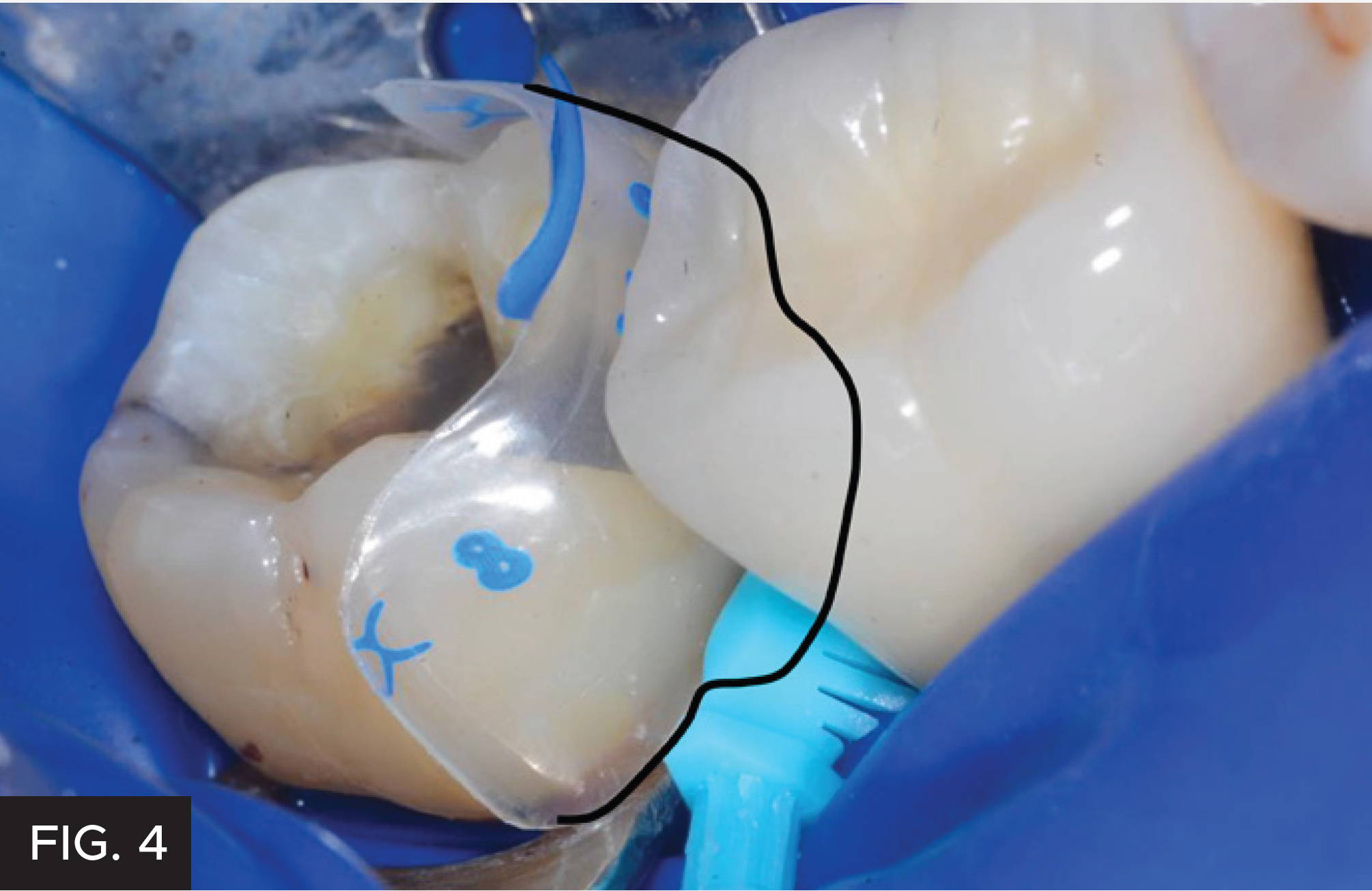
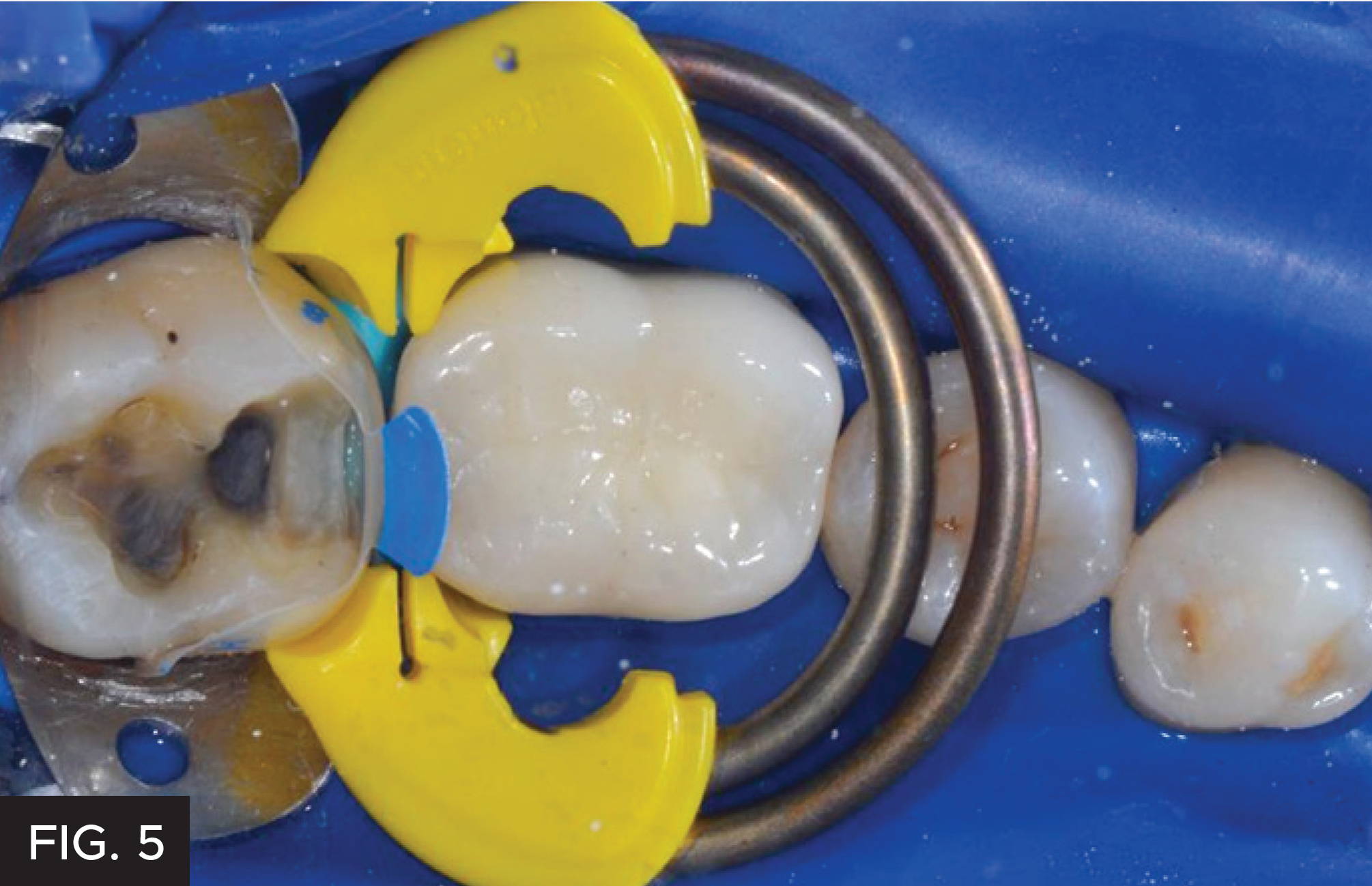
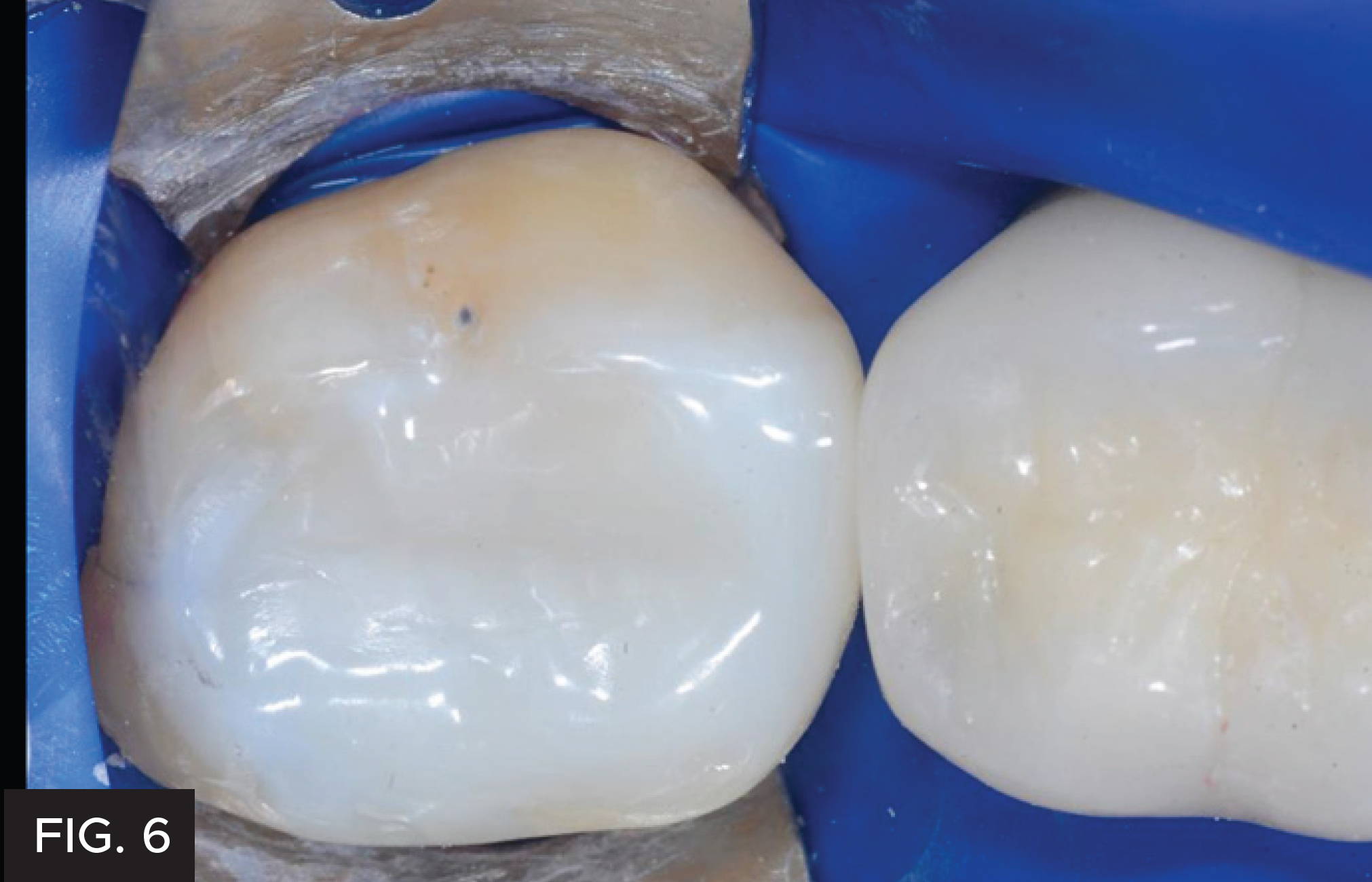
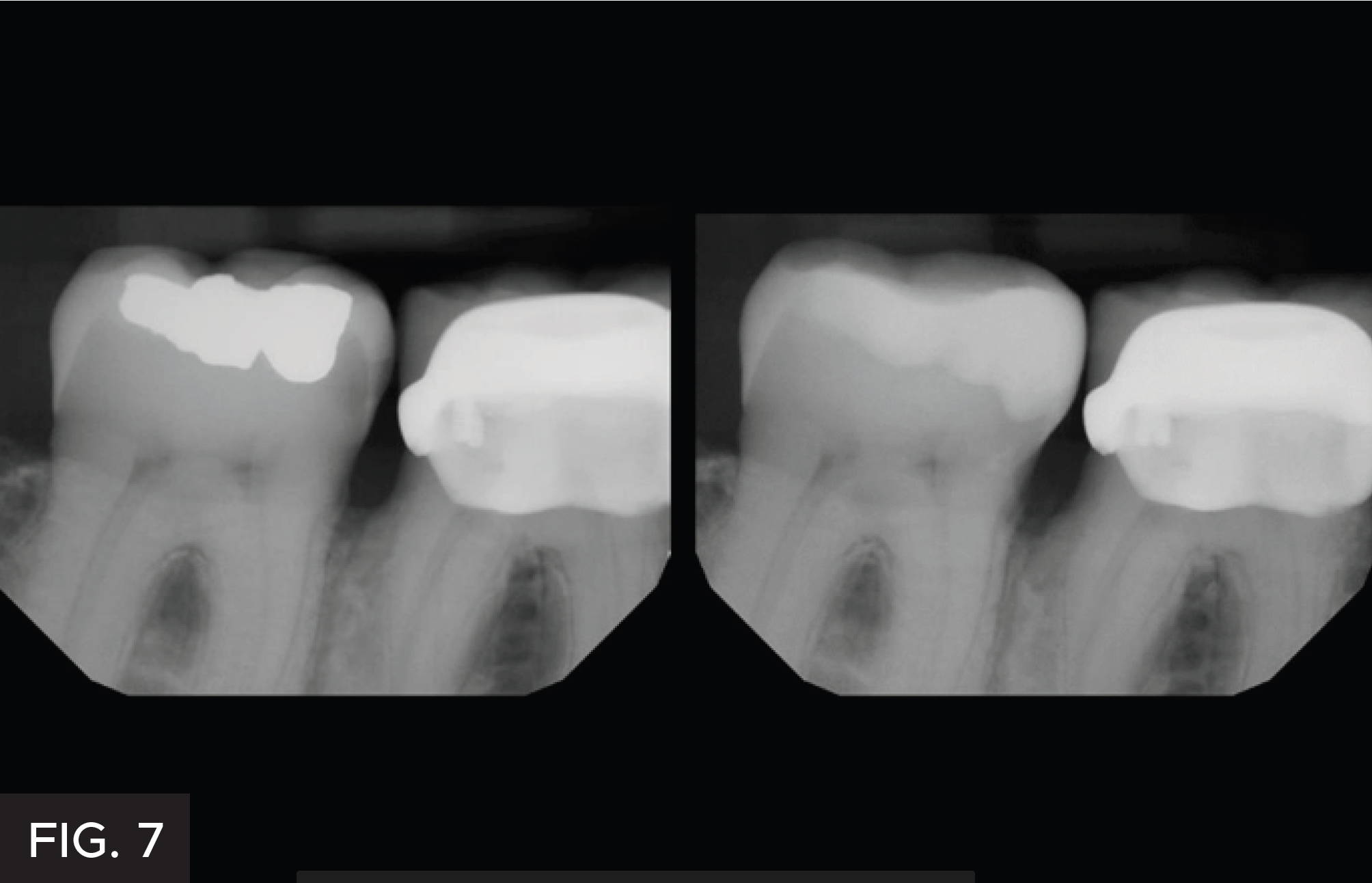
Images courtesy of Dr. David Clark
About the Author

David Clark, DDS
David Clark founded the Academy of Microscope Enhanced Dentistry, an international association formed to advance the science and practice of microendodontics, microperiodontics, microprosthodontics and microdentistry. He lectures and gives hands-on seminars internationally on a variety of topics related to microscope-enhanced dentistry. He has developed numerous innovations in the fields of micro dental instrumentation, imaging, and dental operatory design.
Discover More
This article was originally published in the Clinical Life™ magazine: Fall 2021 edition
Clinical Life™ magazine is a premier periodical publication by Clinical Research Dental Supplies & Services Inc. Discover compelling clinical cases from Canadian and US dental professionals, cutting-edge techniques, product insights, and continuing education events.
Subscribe to our emails to receive articles like this and be notified about our exclusive promotions.

